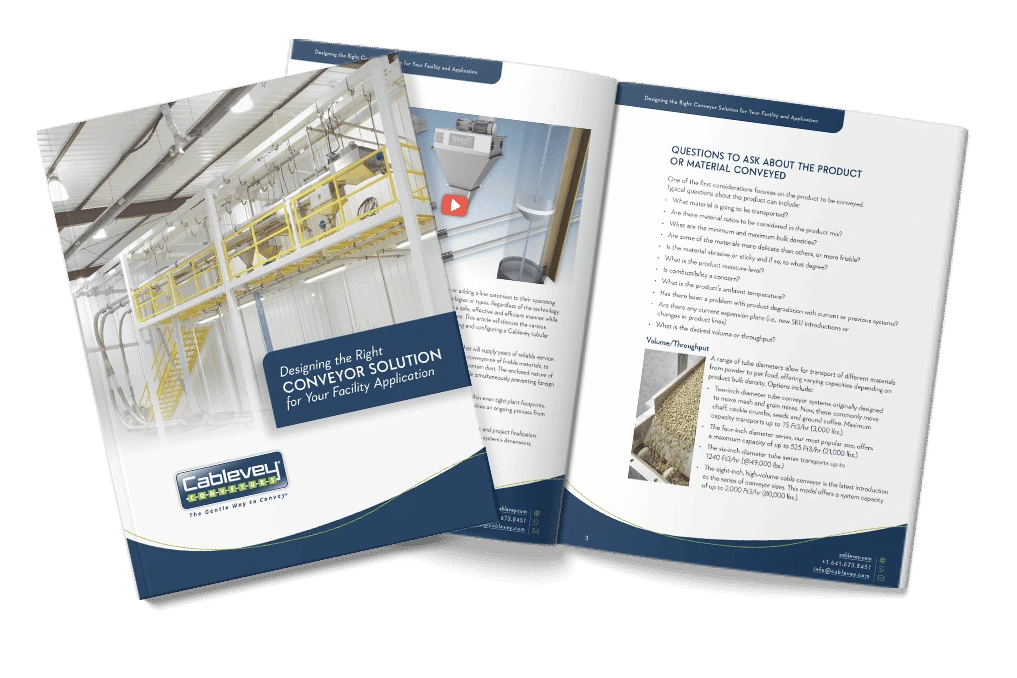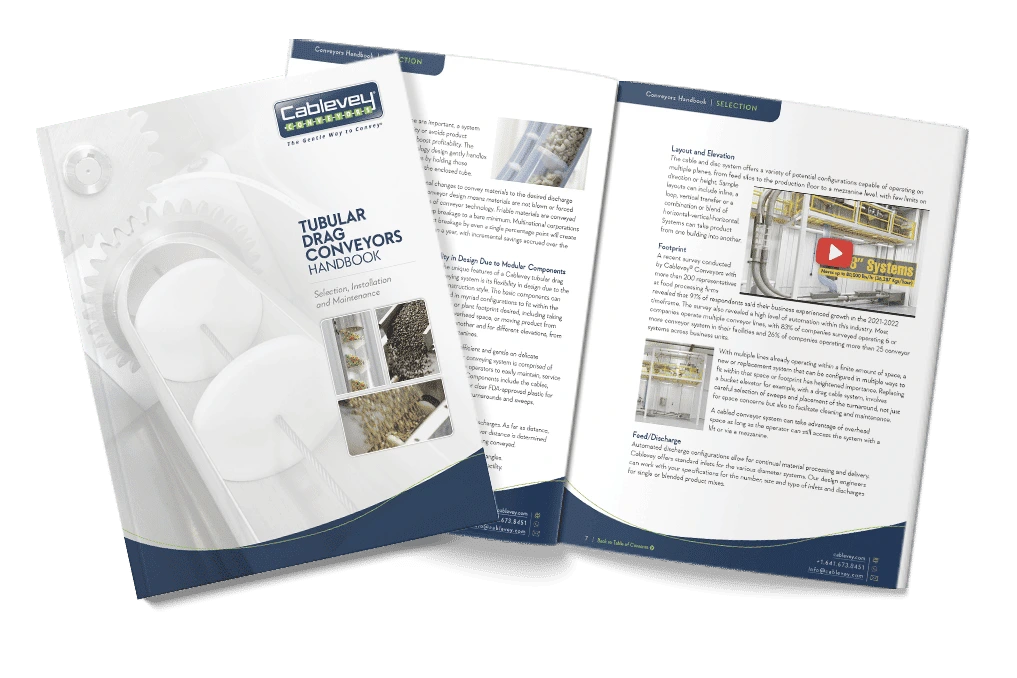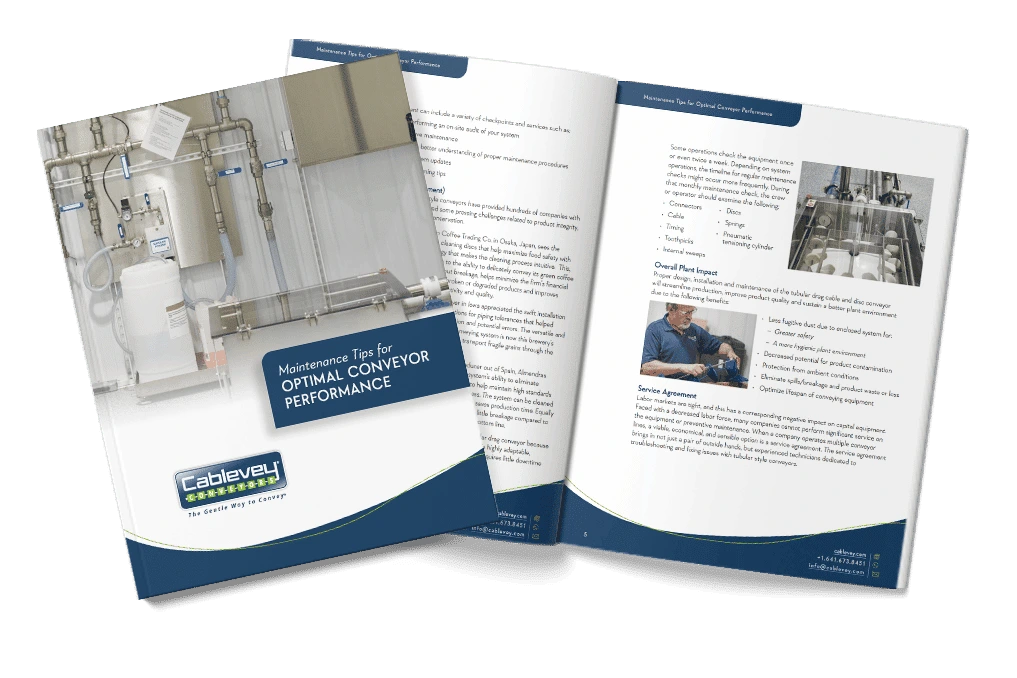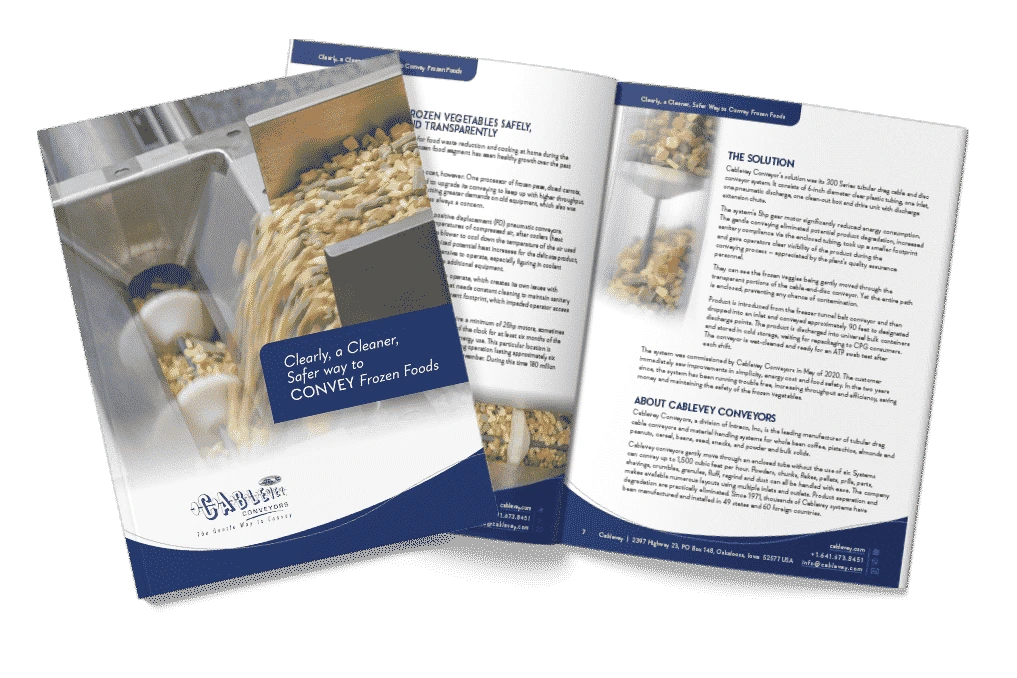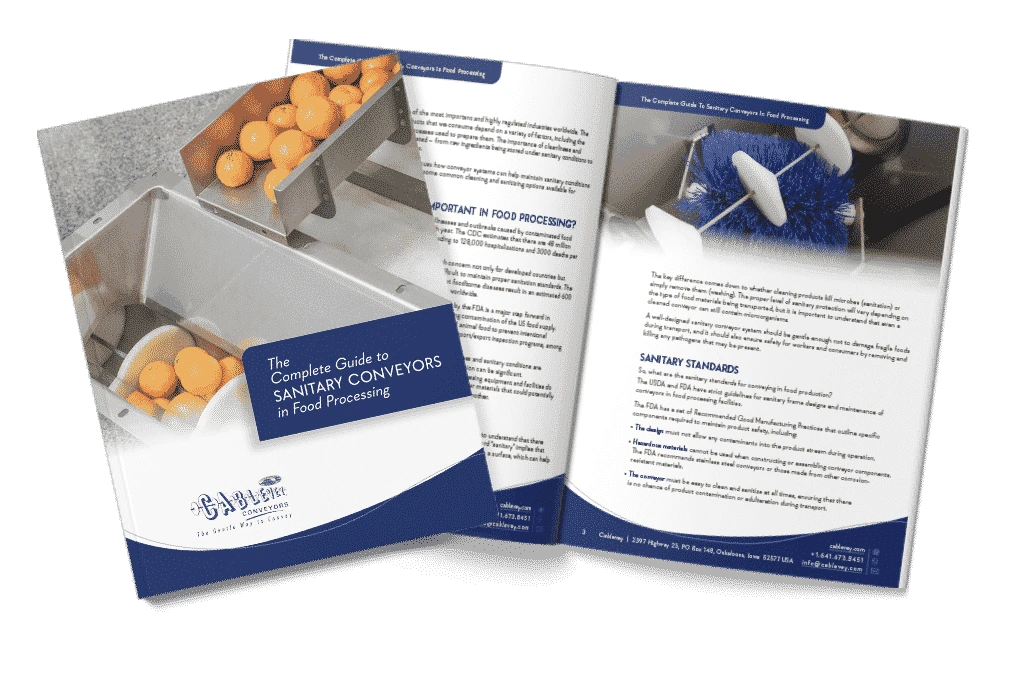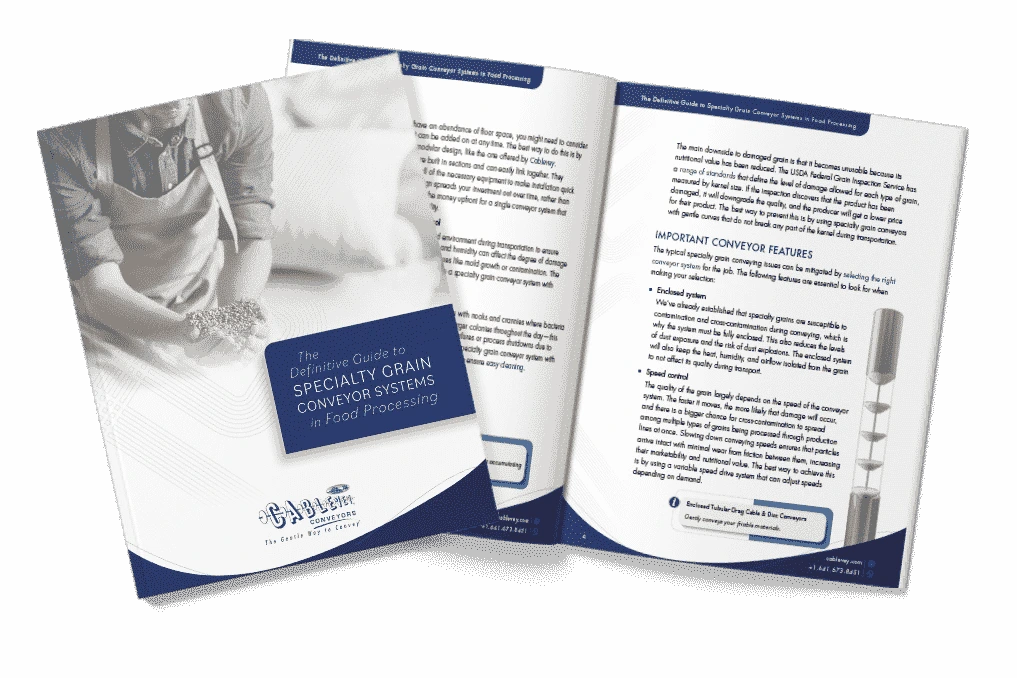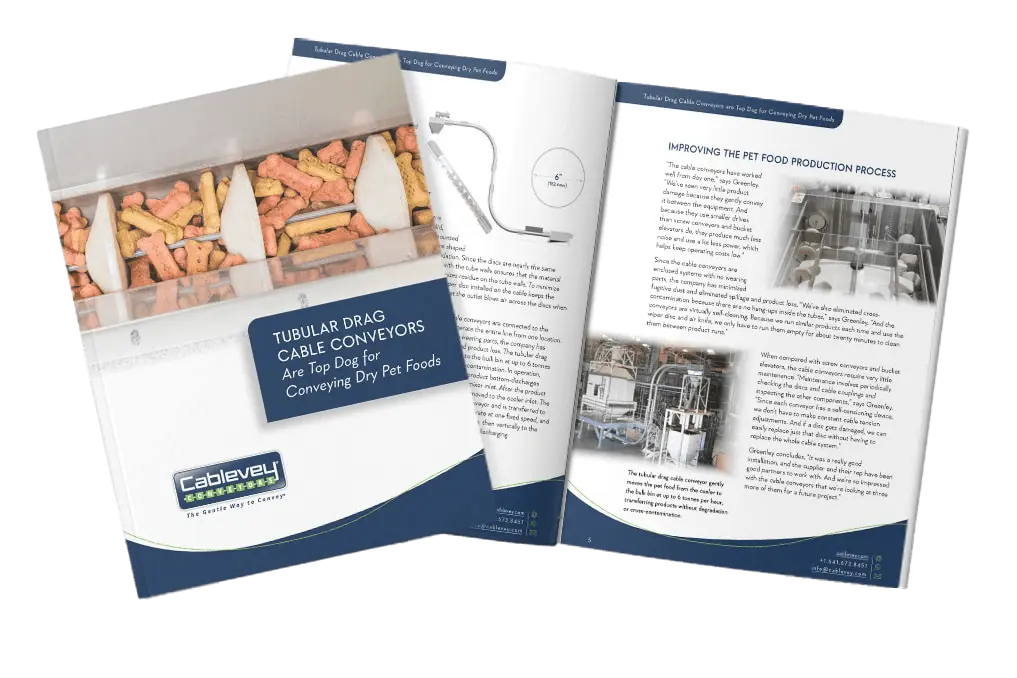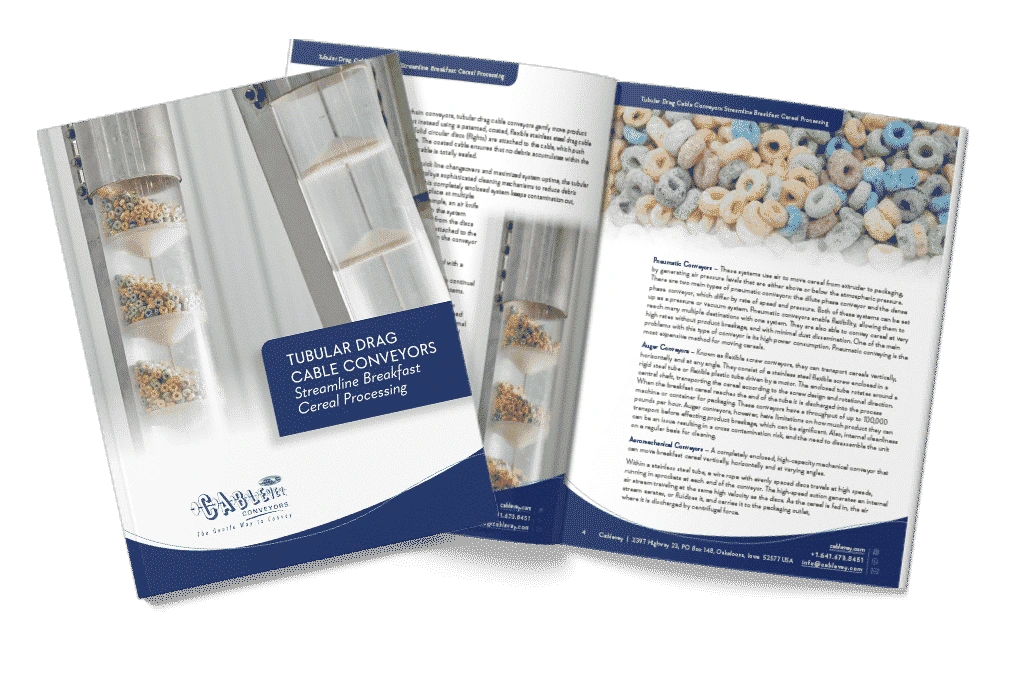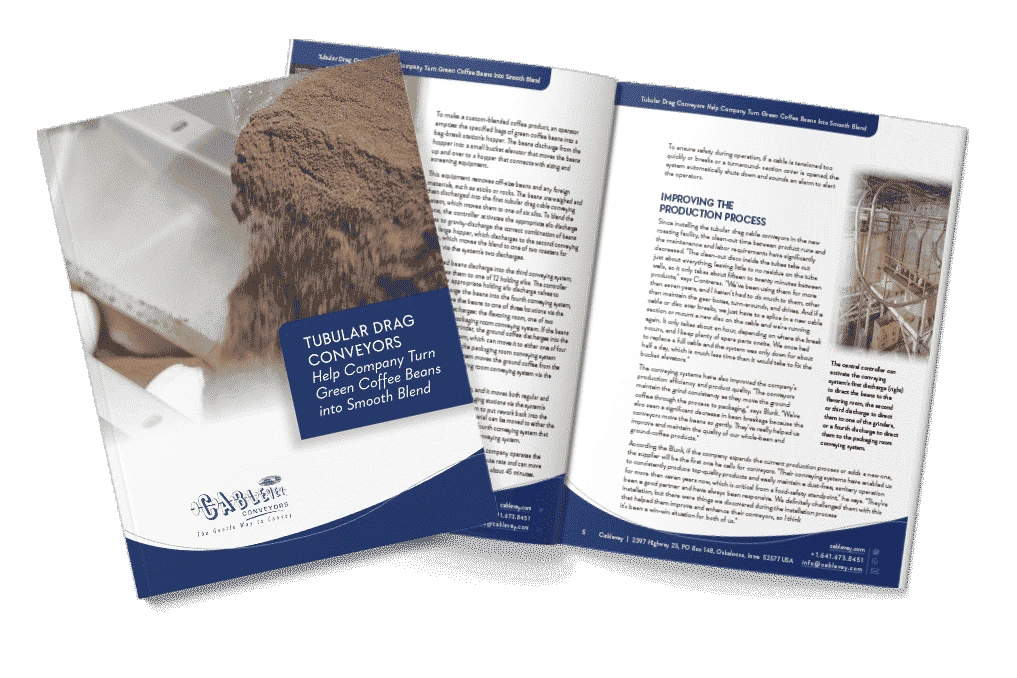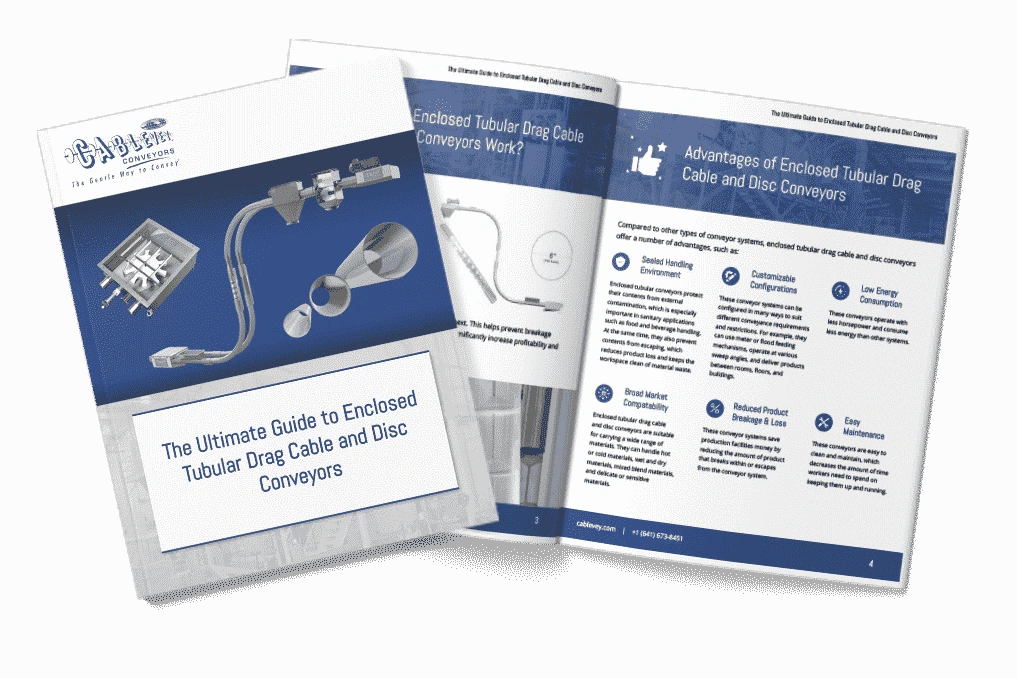White Papers And Guides
State of Conveying 2023 Report
The food processing industry faces a dynamic landscape marked by
both promising opportunities and significant challenges. The 2nd year
of The State of Conveying highlights some of the trends so that you
can better plan for the future.
State of Conveying Report
Food processors continually searching for the most efficient, gentle and productive method for conveyance, particularly when moving cereals, nuts, grains, beans and other materials that are prone to breakage and damage during the conveying process. Cablevey Conveyors commissioned an industry study to hear directly from front-line operators about the challenges and decisions they’re making in specifying and operating conveyor systems.
Designing the Right Conveyor Solution
Tubular Drag Conveyors Handbook – Selection, Installation and Maintenance
Maintenance Tips for Optimal Conveyor Performance
Proper Conveyor Installation Is the Key to Streamline Operations and Optimize Efficiencies
Leave Issues in the Dust: Enclosed Tubular Conveyor System. Both Secure and Reliable
Choosing the Right Conveyor System for Coffee
Clearly, a Cleaner, Safer way to Convey Frozen Foods
The Complete Guide to Sanitary Conveyors in Food Processing
The Definitive Guide to Specialty Grain Conveyor Systems in Food Processing
Tubular Drag Cable Conveyors are Top Dog for Conveying Dry Pet Foods
Tubular Drag Cable Conveyors Streamline Breakfast Cereal Processing
Tubular Drag Conveyors Helps Company Turn Green Coffee Beans into Smooth Blend
The Ultimate Guide to Enclosed Tubular Drag Cable and Disc Conveyors
In industrial and commercial facilities, some materials are challenging to transport using traditional conveyance methods. Solutions can be difficult to find for these items:
- Delicate and fragile materials
- Powdered or granular materials
- Clean or toxic materials
Our Ultimate Guide discusses a variety of conveying technologies to consider, how they work, what benefits they offer, and what products they can move and what to consider.



